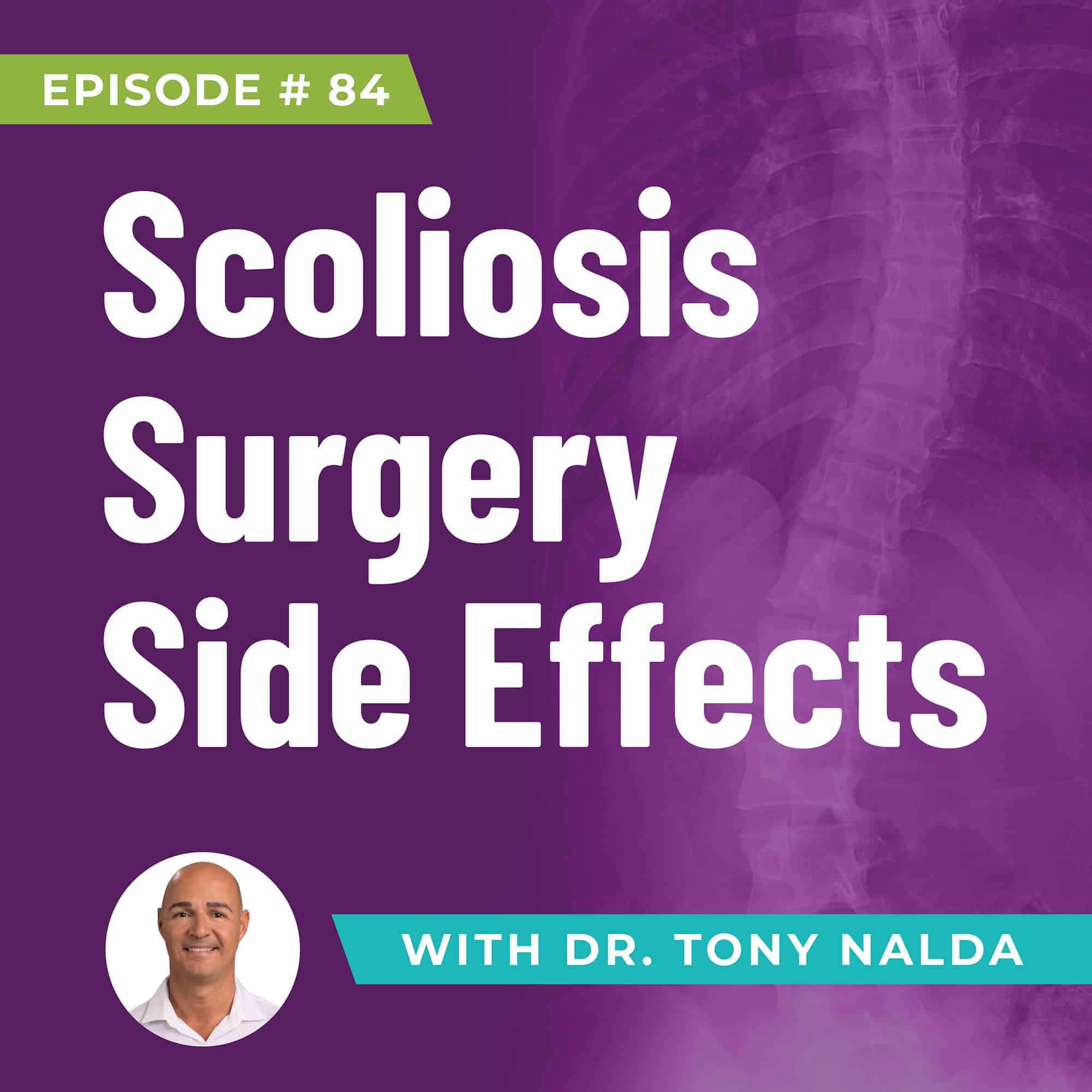Episode 84: Scoliosis Surgery Side Effects
In this episode, Dr. Tony Nalda provides a comprehensive exploration of scoliosis surgery, dissecting the intricacies of spinal fusion – the most common surgical intervention for scoliosis patients.
Purpose of Scoliosis Surgery
Scoliosis surgery, often termed spinal fusion, aims primarily to stop the progression of the condition. While results can vary, the primary goal is to stabilize and straighten the spine, particularly during the adolescent stage when scoliosis is most progressive.
The surgery involves fusing multiple vertebrae, typically from the most tilted vertebra above the apex of the curve to the most tilted vertebra below the curve, using rods and screws. The primary goal is to stop progression, but results in terms of curvature reduction aren't guaranteed.
Risks Associated with Surgery include:
- Blood Loss
- Nerve Damage
- Infection
- Pain at the Fusion Site
- Loss of Spinal Flexibility
Traditional Approach vs Conservative Approach
The traditional approach is often reactive, involving a "watch and wait" strategy. Patients are typically advised to monitor the scoliosis without active intervention until the curve becomes severe enough to consider surgery. The traditional model identifies only a specific treatment window during adolescence (between 10 and 14 years) when a patient may be recommended a Boston brace if the curve is between 25 and 40 degrees. The traditional model tends to lean toward surgery as the primary treatment option, especially for severe cases. Surgery becomes a consideration when the curve reaches a certain degree, often 40-45 degrees or greater. Treatment options within the traditional approach may focus more on managing pain rather than actively reducing the curvature.
The conservative approach on the other hand is proactive, aiming to address scoliosis before it reaches a severe stage. The focus is on non-surgical treatments that work to prevent the curve from becoming severe. Unlike the traditional model, conservative treatments actively work to reduce the curvature, not just manage pain. The goal is to improve spinal function and reduce the curve to avoid the need for surgery. Conservative treatments include various non-surgical options such as braces, chiropractic care, in-office therapy, rehabilitation, exercises, and neuromuscular education. Conservative treatments are often customized for each patient, taking into account the specific characteristics of their scoliosis. The conservative model prioritizes preserving the natural function of the spine, aiming for correction rather than fusion.
In conclusion, it is important to consider both traditional and conservative treatment options. Scoliosis, while not curable, is indeed treatable. By offering insights into the potential complications and limitations of surgery, patients are empowered to make informed choices that align with their unique circumstances and goals.
To know more about scoliosis particularly with conservative, non-surgical treatment options, check out Dr. Tony Nalda’s podcast.
Artlist.io 847544
Podcast: Play in new window | Download
Subscribe: RSS
Dr. Tony Nalda
DOCTOR OF CHIROPRACTIC
After receiving an undergraduate degree in psychology and his Doctorate of Chiropractic from Life University, Dr. Nalda settled in Celebration, Florida and proceeded to build one of Central Florida’s most successful chiropractic clinics.
His experience with patients suffering from scoliosis, and the confusion and frustration they faced, led him to seek a specialty in scoliosis care. In 2006 he completed his Intensive Care Certification from CLEAR Institute, a leading scoliosis educational and certification center.
About Dr. Tony Nalda
 Ready to explore scoliosis treatment? Contact Us Now
Ready to explore scoliosis treatment? Contact Us Now








